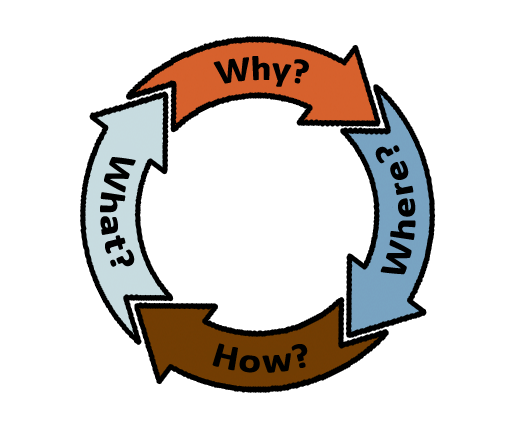Studies have shown that those who write down their goals are more likely to achieve them. Maybe it's because something written down will nag at you more - keeping it top of mind. But also likely is how establishing a goal - or end objective - gives what you do a sense of purpose. Having something clearly defined and written out holds you accountable. "Are we achieving this?" Yes or No. "If we're not achieving this yet, are we doing something to get us closer to achieving it?" Yes or No. Answering "No" twice means we're failing. Failing to achieve and failing to do better.
Of course, goals are not limited to personal improvement and development. Businesses have goals, teams have goals, families have goals. In every instance, it boils down to setting your sights on an objective and doing something to get you there.
Digital marketing is certainly no exception to this. In an online world where we have the ability to measure oodles and oodles of activity, not only can we set goals, but we can use tools to track when they happen and analyze what can be done to make it happen more often. A goal junkie's Utopia!
The following is a quick exercise I put together that addresses the four core phases necessary to have an outcome-driven online marketing campaign.
Write down at least two solid reasons why you have a website. Try not to stop at the one or two most obvious reasons, either. Drill down - peal back another layer. Do you have secondary goals? Tertiary goals? If you do, write them all down.
With your site's goals clearly identified and written out, you've added a new level of clarity and peace of mind. "Why spend another penny online? Here's why! We want to do more of this!" (at this moment, be prepared to whip out your yellow sticky note with the goals you've written out).

Where does our website fulfill the "why."
With your sticky note on your desk, open up your website on your computer. Goal by goal, go through and find where in your website these goals are achieved. If you're an ecommerce site and your goal is to sell more online, you would identify your store and shopping cart. If your site exists to generate leads, look for the Contact Page, the phone number, the online form, the email links, etc. If your site's goal is to brand yourself or your company, find the areas where your message is clearly articulated - perhaps a blog where you regularly post new content.
After figuring out why our site exists and identifying where these goals can be achieved, determine how this will be tracked. An ecommerce site should track purchases and be able to trace them back to the source (e.g. Google PPC, SEO, email marketing). A site that exists to generate leads should track visits to the Contact Page, Contact Form submissions, email link clicks and phone calls. A site that exists exclusively for branding should track visitor loyalty, blog subscriptions and mentions of their brand.
(A common scenario we've seen is where this step is neglected altogether. An owner or manager has no problem answering the why but can't answer how (or even if) it's tracked. If your personal goal was to lose weight, wouldn't it seem crazy not to use a scale? Same thing.)

"What are you doing to make it happen more often, more efficiently, more effectively?"
Almost done! (not really). You now know why your site exists, where the goals are achieved on the site and how you track when these goals are achieved. With a clear line of site to success and the tools in place to know when you're successful, it's now time to determine what you can do to make it occur more often and with greater ease.
An ecommerce site might consider an SEO strategy for your products and product categories, a PPC campaign targeting specific products and a Twitter campaign engaging anyone talking about the activity related to your business. For lead generation, you may also pursue an SEO campaign and PPC targeting. A social media campaign could be very effective at finding people interested in what you offer. For branding, you would comment on blogs, engage people on Twitter and write regular, awesome content. You would want everyone you encounter to think you are the best at what you do.
With the right measurement tools in place, every one of these strategies can be measured back to onsite activity and ultimately goal fulfillment.
There's a reason I don't illustrate these four phases as one linear sequence. For starters, it shouldn't be thought of as having a beginning and end. When you do that, it leaves no room for reacting or reevaluating. As Darwin observed, it wasn't the strongest, but the most adaptive species that would survive. We regularly need to circle back and reassess why we are doing what we're doing.
Having our goals in place keeps us in check and holds us accountable. It lets us make mistakes faster and it tells us when to put the peddle to the metal. Whether you're just beginning to get more serious about your online presence or have been there for years, go through this exercise and see where your company stands. You may come out of it surprised.








Agree, disagree, or just have something to add?
Leave a comment below.